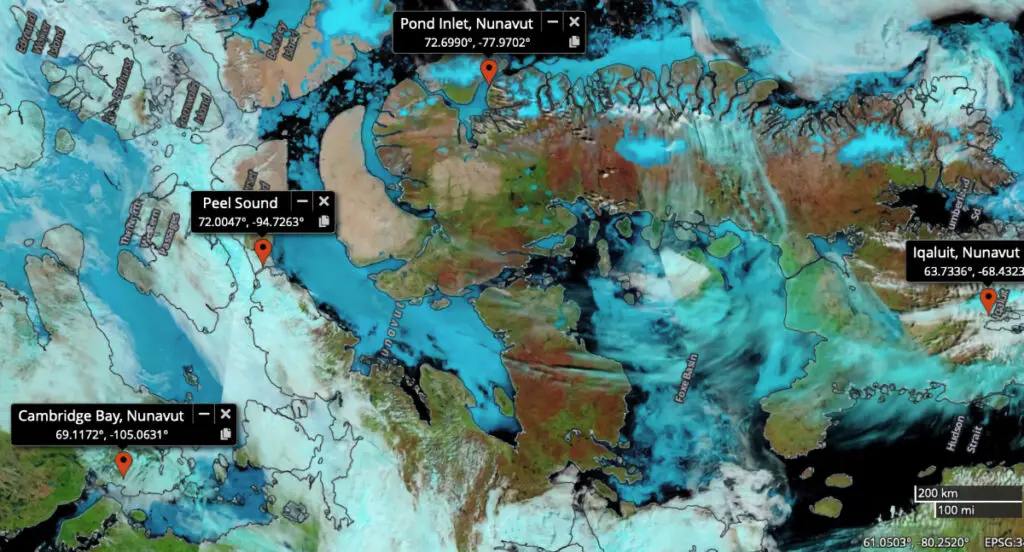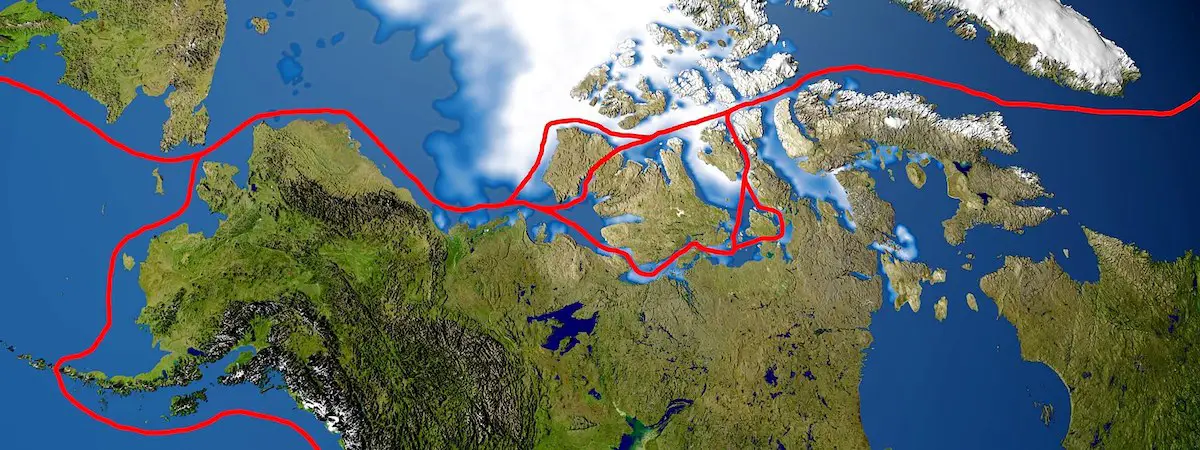For centuries, the Northwest Passage remained a mythical connection between the North Atlantic and the Pacific Ocean. For years explorers searched for this sailing route, with most of those attempts ending in failure and disaster.
But thanks to longer and warmer summers, the Northwest Passage has become a reality in recent years, inviting a new breed of adventurers. For the summer of 2022, the route has seen two independent expeditions attempting to make the crossing under their own power, giving the rest of us the opportunity to follow along with their progress.

The Arctic Cowboys
The first expedition to follow this summer is The Arctic Cowboys. This group started off as a trio of Texans—West Hansen, Jeff Wueste, and Rebekah Feaster—attempting to paddle the Northwest Passage end to end in a single season. All three are extremely experienced kayakers with plenty of long-distance travel on their resume. For instance, Hansen once paddled the entire length of the Amazon River.
The trio of Texans began their journey from Pond Inlet on Baffin Island on August 2nd and are traveling east to west. Despite their late summer departure, however, they’ve found the journey to be a challenging one. They have experienced strong winds, rolling surf, and plenty of ice, all of which have made for a challenging start to the expedition. So much so that Feaster was forced to bow out of the journey, leaving Hansen and Wueste to carry on without her.
The route that the Arctic Cowboys are paddling is expected to cover roughly 3000 km (1864 miles). The team estimates it will take them roughly 60 days to complete that distance. Their biggest fear is ending up blocked by ice at a crucial juncture, which they’re hoping to avoid. The biggest hurdle for past expeditions of this nature has been Bellot Strait, which runs 30 km (18.6 miles) in length, but is only 1 km wide. That narrow passage can get chocked with ice floes even at the height of summer.
Follow the progress of The Arctic Cowboys here.

A SUP Crossing
The other adventurer attempting the Northwest Passage this summer is Canadian Karl Krüger. But unlike his American counterparts, Krüger will be using a stand-up paddleboard to cover the 3000 km distance. Naturally, that SUP board is of the expedition variety with plenty of room to carry gear and supplies. Still, it will be a very different style of travel when compared to the kayaks, especially when dealing with strong wind and waves.
Krüger’s approach differs in another way as well. He’s heading west-to-east for his Northwest Passage crossing, which got underway on July 25. The Canadian paddler launched his journey from the Inuvik village of Tuktoyaktuk in the Northwest Territories and is already progressing along the northern coast of Canada.
So far, there haven’t been a lot of updates on Karl’s progress, but ExWeb reports that he faced strong winds early on. This has led to a slow start and kept him from paddling, forcing him to instead don a harness and pull his watercraft. Hopefully, conditions will improve soon and he can use the SUP board for its intended purpose.
Follow Karl Krüger’s progress here.
The Logistics of the Northwest Passage
Both expeditions are finally getting underway after being delayed by COVID the past few years. Each took to the water in late July, which is when the Canadian arctic is at its warmest, and much of the ice in the Northwest Passage has melted away. Once on the water, however, the journey becomes a race against time. In this part of the world, conditions change rapidly, and by late August, the ice can begin to reform again. 2022 has been a warm summer, of course, so that could be delayed. Plus, climate change has helped keep the route open longer each year. Still, the American team has always planned to wrap this challenge up in a single season and is doing its best to achieve that goal.
We’ll keep an eye on the progress of both attempts to cross the Northwest Passage and provide updates as they go. We should have an idea of whether or not either is successful by mid to late September.
- Gear Review: The Xero Scrambler Mid is an Ultralight Hiking Shoe for Spring - March 1, 2023
- Gear Review: Yeti Roadie 48 Wheeled Cooler - August 18, 2022
- Kristin Harila Continues Pursuit of 8000-Meter Speed Record - August 16, 2022
